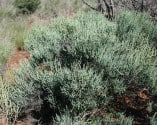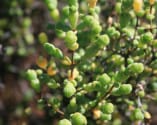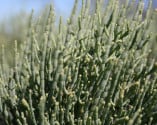
Flora & Fauna of Lake Ballard
Technically, Lake Ballard is “a very large intermittent saline lake in Western Australia’s Murchison bioregion”.
It, and the many other saline wetlands of the Goldfields, are all linked to ancient drainage systems, or Palaeochannels. These ‘channels’ are the relics of ancient rivers that used to drain into the Eucla Basin, to the southeast.
Lake Ballard is a nationally important wetland, being one of the most important breeding sites in Australia for the endemic Banded Stilt (Cladorhynchus leucocephalus), as well as an important migration stopover for other species of waterbird. Of course, you’ll only ever see Banded Silts and other waterbirds at Lake Ballard when it is in full flood. And this applies also to the remarkable Parartemia shrimp, the eggs of which can lie dormant for decades in the salt crust awaiting the next big flood.
There have been nineteen species of reptile and two frog species recorded on and around Lake Ballard. And, of course, most visitors are likely to see at least one or two kangaroos and emus.
In visiting INSIDE AUSTRALIA, between the parking area and the lake’s edge, you’ll encounter a number of varieties of samphire. These succulent, ground-hugging and often edible plants, take their name from ‘sampiere’, a corruption of the French word for Saint Peter, who was the patron saint of fishermen. In Europe, samphire is mostly associated with rocky, salt-sprayed coastal areas, with some varieties referred to as ‘sea asparagus’ and ‘sea pickle’.
In Australia, however, most samphires (all endemic, or unique, to Australia) are to be found fringing inland clay pans and salt lakes, with Lake Ballard being an excellent example. Some Aboriginal people of the Goldfields still harvest and eat the seeds of the genus Tecticornia, which are made into a kind of cake called Kurumi.
If you’d like to discover more about our samphires, we recommend you seek out Bindy Datson’s excellent book Samphires in Western Australia: a field guide to Chenopodiaceae Tribe Salicornieae. It was published by CALM in 2002.
Beyond Lake Ballard’s shore, Mulga woodlands are dominant. Mulga is an Acacia species botanically known as Acacia aneura. The Mulgas have adapted themselves to thriving in arid and semi-arid regions. They have oily thick-skinned phyllodes (flattened leafstalks that resemble and function as leaves), ensuring low moisture loss. Mulga can be highly variable in form and height, as well as in the shape of the phyllodes and the seed pods. So, not surprisingly, they can often confuse non-experts as to their actual identity. Indeed, the variations of Acacia aneura observed both within and between Mulga woodlands across Australia are very significant, resulting in a complex mosaic of different-looking trees that are actually all the same species. The factors responsible for causing and maintaining this variation are poorly understood. For a comprehensive overview of the condition of Lake Ballard, you can download a 2009 report.



